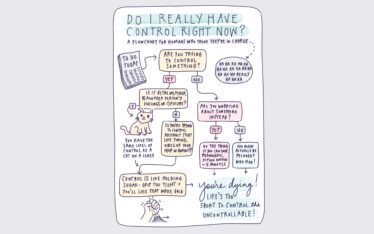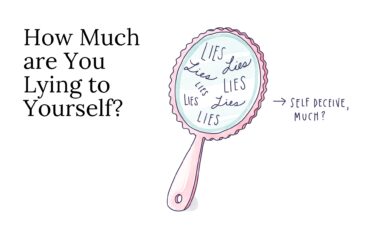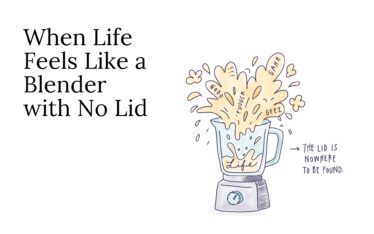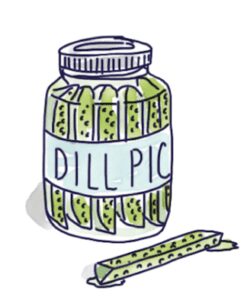 Unless you’ve been in a long-term coma, you’ve likely heard that gratitude is all the rage. And it ain’t no passing fancy (like dill pickle as the food flavoring fad de jour — surely you’ve seen pickle-flavored everything out there?). Nope — gratitude is fad-free. It keeps popping up in the well-being research as an elixir for a life well-lived.
Unless you’ve been in a long-term coma, you’ve likely heard that gratitude is all the rage. And it ain’t no passing fancy (like dill pickle as the food flavoring fad de jour — surely you’ve seen pickle-flavored everything out there?). Nope — gratitude is fad-free. It keeps popping up in the well-being research as an elixir for a life well-lived.
Name-drop moment: In the first day of class in the Master of Applied Positive Psychology program I took at UPenn, Angela Duckworth said in her science-wrapped-with-wit-way that “gratitude is like ketchup — put it on anything and it tastes better.” I want my life to taste like ketchup-covered fries; don’t you?
To be clear about this essential condiment (ketchup, not pickles) … gratitude has two components:
#1: Gratitude is an affirmation of the good stuff in life.
#2: Gratitude involves an acknowledgment that said good stuff came from outside ourselves, creating a humble appreciation of others and the big wide world we live in.
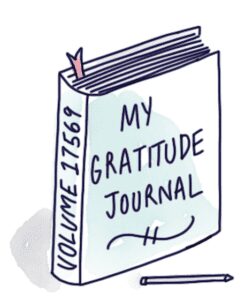 You can read more about gratitude in my little ditty called “How (Un)Appreciative Are You? 55 Ways to Tell.” For now we should really get down to what I promised you in the title of this article … and don’t worry, I’m not going to ask you to start a gratitude journal like you’ve been encouraged to do about 5,850 times before (although holy jeez, the science is irrefutable that life gets so much better when we write the good shit down). Nope, I’m going to take a classic Four Thousand Mondays pseudo-morbid twist … we’re going to take it to the dark side, kids.
You can read more about gratitude in my little ditty called “How (Un)Appreciative Are You? 55 Ways to Tell.” For now we should really get down to what I promised you in the title of this article … and don’t worry, I’m not going to ask you to start a gratitude journal like you’ve been encouraged to do about 5,850 times before (although holy jeez, the science is irrefutable that life gets so much better when we write the good shit down). Nope, I’m going to take a classic Four Thousand Mondays pseudo-morbid twist … we’re going to take it to the dark side, kids.
The Grim Reaper and Gratitude
Psychologists are clear that “When one is confronted … with a situation where their life is in jeopardy, appreciation for this benefit may result because they have become more aware of what ‘might not be’ — which in this case is life itself.”
Most of this already know this to be true (and not just because I told you all about it in Life Secrets From Those Who Have Looked Death in the Eye). Appreciation for life spikes when we’ve been on the verge of losing it. Thankfully most of us haven’t had a brush with death, and don’t worry! I’m not going to encourage you to seek out a near-death experience just to blow the lid off your appreciation for having a heartbeat.
A unique and effective way to stop taking your life for granted is to vividly reflect on your (*gulp*) death. One study caught my eye, and I want it to catch yours, too.
Researchers divided study participants into three groups:
- A ‘control’ group, where the lab rats participants were asked to imagine waking up to a typical day.
- A ‘mortality salience’ group, where participants were asked, “In as many words and in as much detail as possible, please describe the thoughts, feelings, and emotions you experience when thinking about your own death.”
- A ‘death reflection’ group, where the participants were asked to (brace yourself!) “imagine waking up in the middle of the night in a friend’s apartment on the 20th floor of an old, downtown building to the sounds of screams and the choking smell of smoke.” Study participants were told to envision “making futile attempts to escape from the room and burning building before giving into the fire and eventually death.” (Isn’t science hilarious?)
Key detail: study participants were asked to complete a ‘gratitude for life’ questionnaire before and after being siphoned off into their three groups.
Here’s how things went down in the study …
People in the control group (thinking about an average day in their hum-drum lives) bored themselves to death. (I jest. But they actually experienced a dip in their gratitude through the duration of the study.)
People in the mortality salience group (thinking about their death in an abstract way) experienced a mild bump in gratitude.
People in the death reflection group (don’t make me revisit that whole fire scenario you masochist you) “significantly enhanced state gratitude compared to subjects that did not think about their own mortality.”
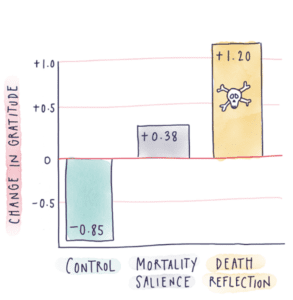
When we are forced to look at our inevitable demise in a way that feels more real to us … with vivid details that make our burning-in-a-fire death more concrete … that deliberate, evocative exercise tends to not only wake us up to our finitude, but it also forces us to count our blessings that we are still alive, that we can breathe fresh air, that we have time left to MAKE SOMETHING of our precious existence.
Researchers also make it clear that the reverse is true: not only does confronting our mortality make us feel grateful, but gratitude helps with the whole distasteful death anxiety thing: “reexamining life events with a thankful attitude, people may become less fearful of death due to a sense that life has been well-lived.”
In our ongoing quest to live happy and fulfilling lives, it might seem counterintuitive to imagine the horror of our non-existence. But if we do it every now and then — with bracingly vivid detail — it just might be the animating condition we need to snap to attention, appreciate our aliveness, and do our lives justice.
I am going to go imagine my gruesome death now, and then get out there and savor the flavor of life (or at least the flavor my favorite dill pickle chips). Join me in this memento mori exercise!

P.S.: I really think we should connect on Instagram!
P.P.S.: Oh and just in case you missed it… I’d love you forever if you took 16 minutes out of your life to watch my TEDx talk!




